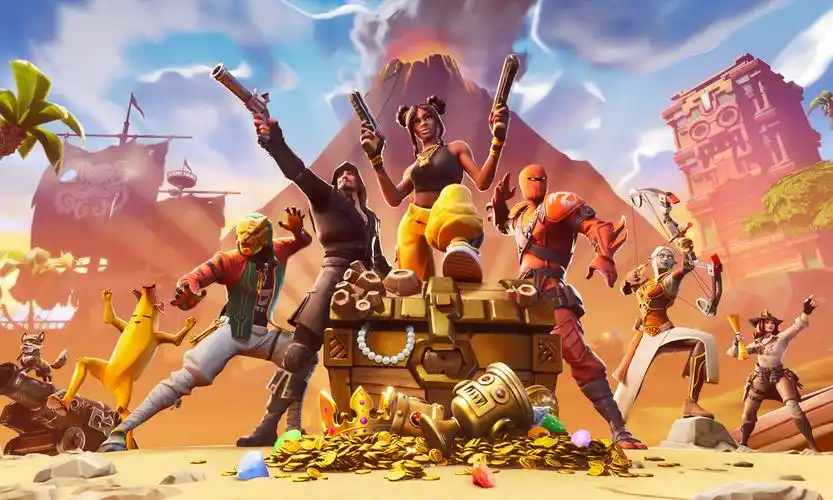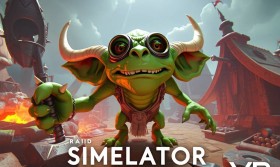Title: Biochemist Simulator VR: The Molecule Missions Update - A New Era of Interactive Science
The frontier of virtual reality is constantly expanding, pushing beyond the realms of fantasy and into the intricate, awe-inspiring world of science. Biochemist Simulator VR, a trailblazing title dedicated to delivering a hyper-realistic laboratory experience, has just taken a monumental leap forward with its latest expansion: the Molecule Missions Update. This isn't just a patch; it's a complete paradigm shift, transforming the game from a sandbox of solitary experimentation into a dynamic, narrative-driven adventure at the molecular level.
For the uninitiated, Biochemist Simulator VR placed players inside a fully-equipped, state-of-the-art virtual lab. Using motion controllers, they could meticulously conduct experiments, synthesize compounds, and operate sensitive instruments with an unprecedented level of tactile fidelity. It was a triumph for science educators and enthusiasts alike. The Molecule Missions Update builds upon this robust foundation by introducing a critical new element: purpose.
The Premise: More Than Just Experiments
Gone are the days of aimless mixing. The update introduces a new campaign mode, "Molecule Missions," where players become agents of the Global Science Initiative (GSI). The GSI is a fictional organization tackling global crises—a devastating pandemic, a mysterious environmental toxin, a crop blight threatening food security. Your mission, should you choose to accept it, is to solve these challenges one molecule at a time.
The update begins with an emergency briefing. A holographic display materializes in your lab, detailing the crisis. For instance, Mission One, "Project: Antidote," tasks you with developing an inhibitor for a novel enzyme secreted by a harmful bacterium. This narrative framework provides immediate, high-stakes context for your work, making every successful reaction feel like a victory for humanity.
Gameplay Evolution: Intuitive Tools for Complex Problems
The core of the update lies in its new suite of analytical and interactive tools designed to visualize the invisible.
1. The Molecular Visualization Helmet (MVH): This is the crown jewel of the update. Toggling the MVH shifts your perspective from the macro lab world into a breathtaking micro-scale universe. Suddenly, your flask isn't just a container of blue liquid; it’s a swirling, dynamic ecosystem of atoms and molecules. You can see hydrogen bonds forming and breaking, observe substrate molecules docking into the active sites of enzymes you've synthesized, and witness the precise moment a reaction pathway succeeds or fails.
This isn't just a pretty visual effect; it's a functional diagnostic tool. If a synthesis fails, you can zoom in on the reaction and see why—perhaps a steric hindrance prevented a key bond from forming, or the reaction conditions weren't optimal. This visual feedback loop is an incredible learning tool, demystifying complex biochemical concepts through direct observation.
2. The Quantum Manipulator: For the first time, players are granted limited agency at the atomic level. Using specialized controllers, you can gently "nudge" atoms into position, guide a substrate towards an active site, or apply a minute amount of energy to overcome activation barriers. This tool is governed by realistic physics and energy constraints—you can't simply force impossible reactions—but it allows for a hands-on understanding of molecular geometry and interaction forces that was previously impossible to simulate.
3. Dynamic Reaction Engine: The underlying game mechanics have been completely overhauled. The new engine calculates reaction outcomes based on quantum mechanical principles and real-world kinetic data. Factors like pH, temperature, solvent polarity, and catalyst presence now have profoundly more nuanced and visible effects. Creating a successful compound requires deep thought, careful planning, and sometimes a bit of inspired intuition.
The Educational Impact: Learning by Doing
The "Molecule Missions" are meticulously designed around real-world biochemistry principles. Each mission teaches core concepts:
- Mission 1: Enzyme Kinetics & Inhibition. Players learn about Michaelis-Menten kinetics, competitive vs. allosteric inhibition, and rational drug design.
- Mission 2: Protein Folding & Denaturation. A mission to stabilize a therapeutic protein teaches the importance of tertiary and quaternary structures, and the effects of heat and pH.
- Mission 3: Nucleic Acid Hybridization. Focusing on diagnostics, this mission requires designing a DNA probe for a specific pathogen sequence, introducing players to PCR principles and base-pairing rules.
This seamless integration of curriculum-level science into compelling gameplay is what sets this update apart. It’s a masterclass in experiential learning.
Community and Collaboration
Understanding that science is a collaborative effort, the update also introduces asynchronous multiplayer features. Players can upload their successfully synthesized molecule structures to a global "GSI Database." If you're stuck on a mission, you can search the database for a compound that meets the criteria and study another player's synthesis pathway for inspiration. This fosters a sense of shared discovery and community, mirroring the real-world scientific process.
Conclusion: A New Standard for Sci-Ed VR
The Molecule Missions Update for Biochemist Simulator VR is more than an expansion; it's a revelation. It successfully bridges the gap between rigorous scientific simulation and engaging, accessible gameplay. By giving players a tangible, visual, and interactive window into the molecular world and framing their work within urgent, meaningful narratives, it transforms learning from a passive activity into an unforgettable adventure. It sets a new gold standard for what educational VR can achieve, proving that the most powerful way to understand science is not to read about it, but to literally reach out and touch it.



















